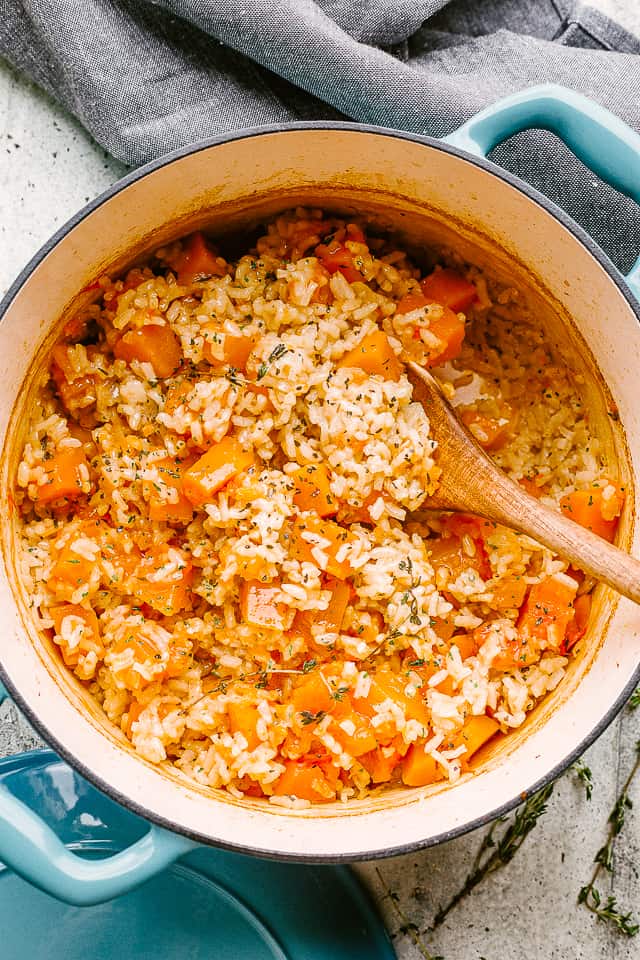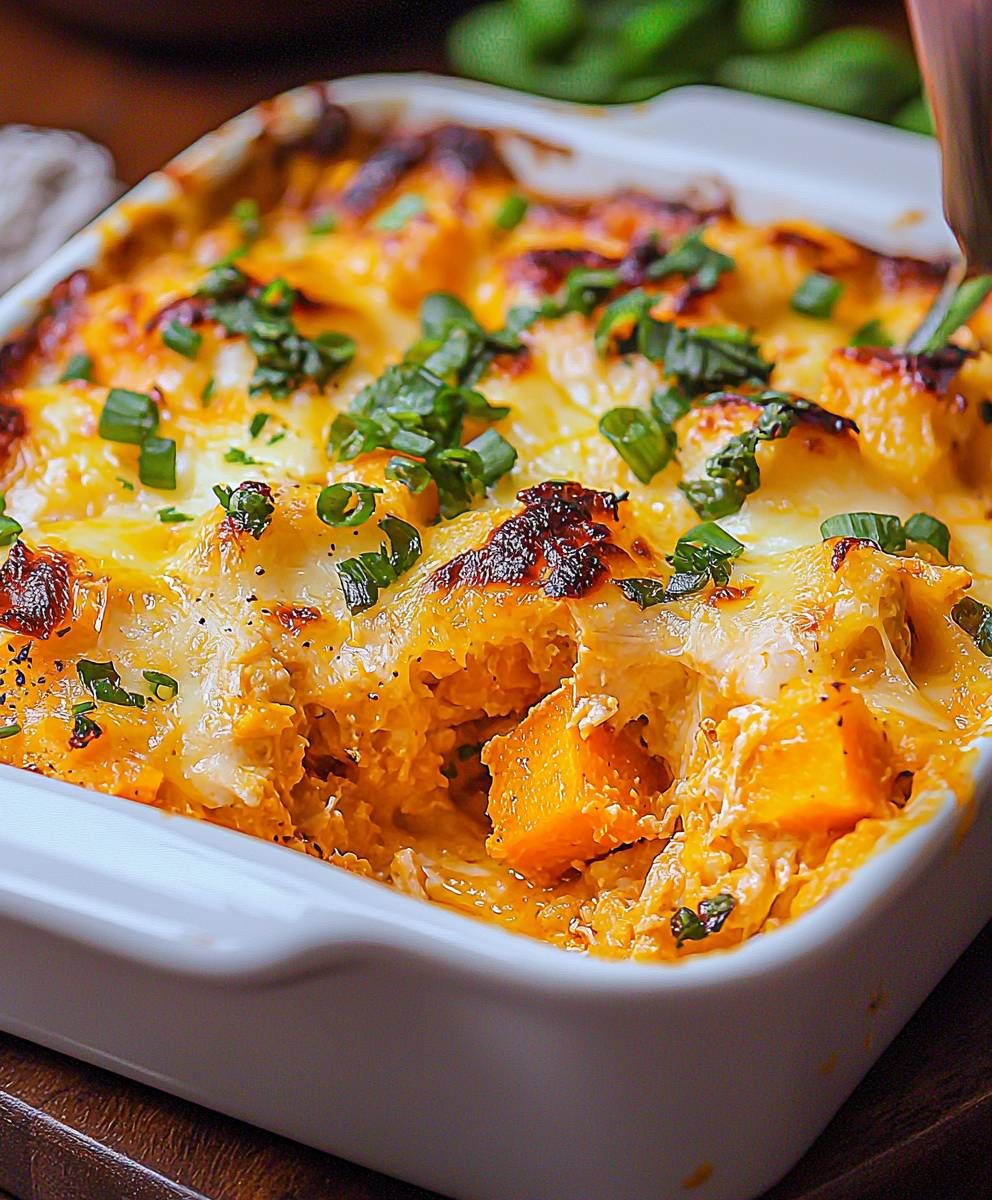Note
Butternut squash casserole is a comforting, flavorful, and versatile dish perfect for holiday dinners, potlucks, or even a cozy family meal. Its naturally sweet and nutty flavor pairs beautifully with both savory and sweet ingredients.
Whether you’re making it as a side dish or a vegetarian main, these tips and tricks will help you achieve a rich, satisfying result.
Cooking Tips for the Perfect Butternut Squash Casserole
1. Choose the Right Squash
Pick a firm, heavy butternut squash with smooth, beige skin. Avoid squash with green patches or soft spots. A medium-sized squash (about 2–3 pounds) typically yields enough for 4–6 servings.
2. Roast for Maximum Flavor
Roasting brings out the natural sweetness of the squash and gives it a caramelized depth. Cut it into cubes, toss with olive oil, salt, and a bit of cinnamon or smoked paprika (depending on whether you're going sweet or savory), and roast at 400°F (200°C) for 25–30 minutes.
3. Blend for Creaminess
For a creamy texture, blend the roasted squash with a splash of milk or cream before adding it to the casserole. You can use an immersion blender, food processor, or even mash it by hand if you prefer a more rustic texture.
4. Use Flavor-Boosters
Add flavor layers by sautéing onions and garlic in butter or olive oil and mixing them into the squash. For a savory casserole, include thyme, rosemary, or sage. For a sweet version, try nutmeg, cinnamon, or maple syrup.
5. Cheese Is Key (Savory Version)
Adding cheese like sharp cheddar, gruyère, or parmesan gives richness and depth. Stir some into the squash mixture and sprinkle more on top for a golden crust.
6. Add a Crunchy Topping
A crispy topping adds texture contrast. Try toasted breadcrumbs, crushed crackers, or chopped pecans. For a sweet casserole, a brown sugar and oat crumble works wonderfully.
7. Don’t Overbake
Bake just until everything is heated through and the top is golden, usually 20–25 minutes at 375°F (190°C). Overbaking can dry it out.
Serving Tricks & Creative Ideas
1. Serve in Individual Ramekins
For dinner parties or holiday meals, serve the casserole in individual ramekins for a beautiful presentation and easy portioning. Guests love the personalized touch!
2. Pair with Contrasting Flavors
Butternut squash has a sweet, mellow flavor. Balance it with tangy or spicy sides—think cranberry relish, roasted Brussels sprouts with balsamic glaze, or spicy sausage.
3. Add Protein for a Main Dish
Make it a full meal by adding cooked quinoa, shredded chicken, or chickpeas. Mix it into the casserole base before baking.
4. Use as a Side for Roasted Meats
This casserole pairs beautifully with roasted turkey, pork loin, or baked ham. Its creamy, comforting nature complements bold, savory mains.
5. Garnish Before Serving
Right before serving, garnish with fresh herbs like parsley or sage for a pop of color and freshness. A drizzle of maple syrup or hot honey (for the sweet version) adds a gourmet finish.
6. Store and Reheat Smartly
Leftovers can be stored in the fridge for up to 4 days. Reheat covered in the oven at 350°F (175°C) or microwave individual portions. To maintain the crisp topping, reheat uncovered for the last few minutes.
7. Make Ahead Friendly
You can prepare the casserole up to 2 days ahead. Assemble it fully, cover tightly, and refrigerate. Bake just before serving for stress-free entertaining.
Variations
- Make it vegan: Use plant-based milk (like almond or oat), skip the eggs, and use a flax egg substitute. Use vegan butter and nutritional yeast instead of cheese.
- Add protein: Mix in cooked quinoa, lentils, or shredded chicken for a complete meal.
- Add greens: Stir in sautéed spinach or kale for extra nutrients.
- Extra creamy: Add a spoonful of sour cream or cream cheese to the squash mixture for richness.
Storage and Reheating
- Store: Refrigerate leftovers in an airtight container for up to 4 days.
- Reheat: Warm in the oven at 350°F (175°C) until heated through, or microwave individual portions for 1–2 minutes.
- Freeze: This casserole can be frozen after baking. Cool completely, wrap tightly, and freeze for up to 2 months. Thaw in the fridge overnight before reheating.
Tips for Success
- Don’t skip roasting the squash — it deepens the flavor.
- Use freshly grated cheese for the best texture and melt.
- Taste the squash mixture before baking to balance sweetness, salt, and spice.
- For a lighter version, use egg whites and low-fat milk.
Final Thoughts
Butternut squash casserole is more than just a side dish—it’s a canvas for creativity. Whether you make it sweet or savory, simple or elegant, these tips and tricks will elevate your casserole and impress your guests. It’s hearty, wholesome, and always a crowd-pleaser.
This Butternut Squash Casserole is a wholesome, cozy, and flexible dish that shines in every season — especially in fall and winter when squash is at its best.
Whether you're craving a nourishing side or a vegetarian main, this recipe offers rich flavor, texture, and comfort in every bite.


 Preheat your oven to 400°F (200°C). Line a baking sheet with parchment paper. Spread the cubed butternut squash on the tray, drizzle with olive oil, and season lightly with salt and pepper. Roast for 25–30 minutes, or until the squash is tender and lightly caramelized, tossing once halfway through. Remove from oven and let it cool for a few minutes.
Preheat your oven to 400°F (200°C). Line a baking sheet with parchment paper. Spread the cubed butternut squash on the tray, drizzle with olive oil, and season lightly with salt and pepper. Roast for 25–30 minutes, or until the squash is tender and lightly caramelized, tossing once halfway through. Remove from oven and let it cool for a few minutes.


